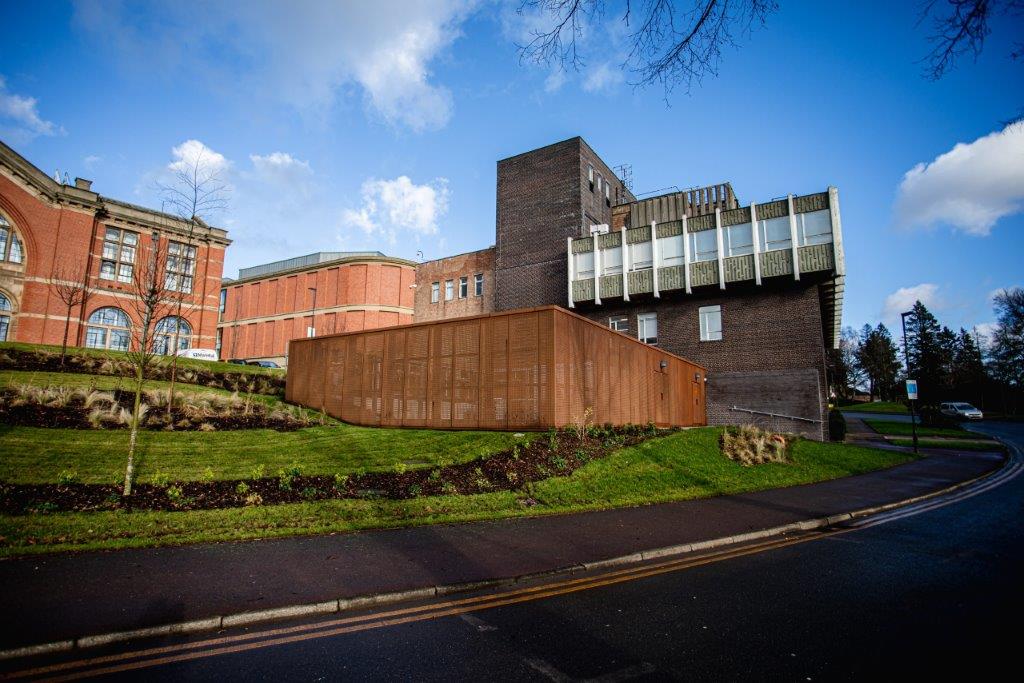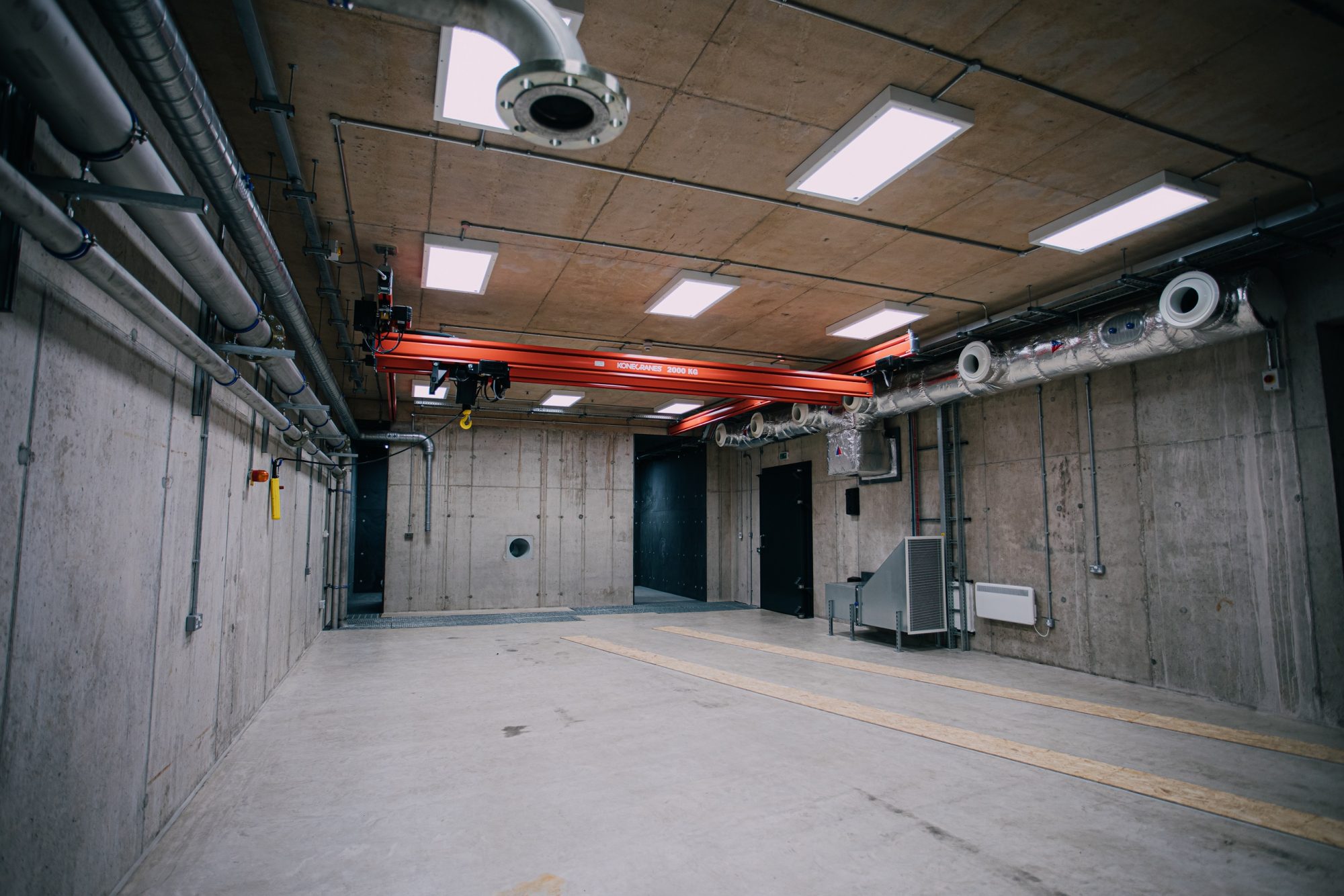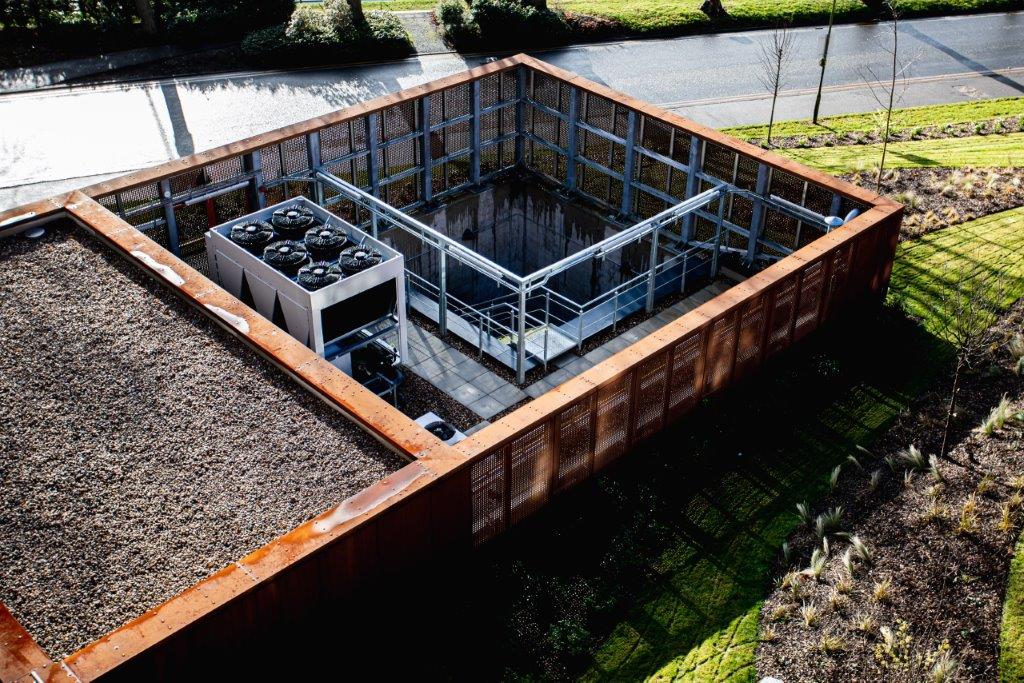The leading Midlands contractor has completed a new medical physics bunker at the University of Birmingham to house the UK’s first High Flux Accelerator-Driven Neutron Facility

The new medical physics bunker is situated on the site of the the Physics East Building at the university’s Edgbaston Campus. The neutron facility will form part of The School of Physics and Astronomy.
Leading Midlands contractor G F Tomlinson oversaw both the design and build of the medical physics bunker with construction commencing in September 2020. This meant that the grounds of an existing bank of land had to be excavated down eight metres from the high side, and four and a half metres from the lower side under strict guidance from geologists.
The contractor opted for a collaborative approach to this project, working closely with concrete structure specialists Northfield Construction Ltd and M&E engineers Dodd Group. Following excavation works on site, the partners erected a steel frame and the installed a concrete structure – with a 450mm thick floor, 600mm thick walls and a 300mm thick floor slab on top. Specialist radiation doors were also installed.
Following this, landscaping works have also been carried out on site. This includes the sowing of grass seeds and planting of trees along the bank leading up to the bunker.


The new medical physics bunker is a UK first: housing a High-Flux Accelerator
The bunker will house a High-Flux Accelerator, allowing university researchers to better understand how neutrons interact with matter. This will improve the way that research and technology can be applied in nuclear medicine and the study of space.
To enable the installation of the High-Flux Accelerator, G F Tomlinson installed a gantry crane and roller shutter. However, G F Tomlinson will return to replace the shutter with a wall later in the year, sealing the highly specialised equipment safely into its final location. The medical physics bunker is due to be fully operational by summer 2022.
Creating a space for world-leading innovation
The High Flux Accelerator-Driven Neutron Facility will be the first of its kind in the UK, and only the second such facility in the world – the only other is located in Helsinki in Finland.
It forms part of the National Nuclear User Facility (NNUF), which is funded by the Department for Business, Energy, and Industrial Strategy (BEIS).
The new medical physics bunker will create a hub for international research with applications extending to nuclear medicine and space. It will also enable a national training programme to boost the UK skills base in these state-of-the-art techniques.
The new neutron facility will house crucial research in nuclear
Managing director of G F Tomlinson, Chris Flint, made the following comments:
“We’re incredibly proud to have completed the construction of this new bunker. It will be home to an important international facility designed to perform crucial research in the nuclear sector, which can be used to further specialised nuclear medicine and the understanding of materials in space.
“The bunker has been meticulously designed and built with safety and security of the utmost priority – the thickness of the concrete structure will ensure protection from radiation, as well as the installation of specialist radiation doors into the facility. Once fully installed, the facility will be operated in accordance with strict guidelines set out by the Health and Safety Executive (HSE) and the Environment Agency.
“We worked on site whilst the adjacent Physics East Building was occupied and being used for studying and essential testing throughout each day of the project, we therefore took great care to ensure our works did not disrupt the existing building users.
“The University of Birmingham has a long-standing history and track record of carrying out vital scientific research and it is wonderful to have worked with them to provide the ideal location for this unique facility, which will set a benchmark for further investment and development in the UK’s nuclear research future.”













